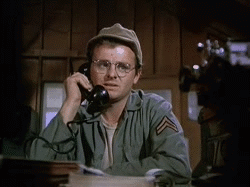Clearly we live in worlds of increasing complexity. The issues our customers and our own organizations deal with are increasingly complex. The problems and challenges our customers face are not trivial. Our solutions and products are increasing in breadth and scope. The rate of change, both self generated and externally imposed, seems to be accelerating.
It’s becoming increasingly difficult to get things done! Both with our customers and within our own organizations. CEB data shows the number of decisionmakers involved in making complex B2B decisions has grown from 5.4 to 6.8. And those decisionmakers represent at least 3 functions in the organization. Similarly, the number of people we need to work with in our own organizations has increased tremendously.
As sales people, to get things done, we have to be able to navigate both our customers organizations/decisionmaking processes and our own organizations and processes.
For too many sales people, this is a struggle—or they are simply oblivious to it. They continue to call on “their guy.” It’s the person they’ve always called on, perhaps someone who’s friendly toward their offerings, maybe someone who has bought before. Despite knowing that multiple people are likely to be involved in the decision, they focus their time on that individual–betting their ability to win on that individual.
Likewise, many of these sales people, don’t pay attention to the things they need to get done internally. If it isn’t part of the process or playbook, they ignore it–perhaps getting the legal review, understanding pricing, getting support from product management, looking at logistic issues. They need to know the procedure and follow it–and they get stopped when the procedure doesn’t work for them. Alternatively, they depend on managers to get things done for them, or at least to point them in the right direction—and sometimes managers just don’t have the time or ability to do this.
But top performers are different. They possess a capability I call, “organizational savviness,” or “organizational nimbleness.”
They have an ability to get things done within organizations–the customers and their own. They have an ability to figure organizations out, to identify the people than can help them achieve what they need. They aren’t bound by titles or org charts, they know that Bob in finance can help them with pricing issues, that Jill in legal can finesse contract challenges, that Trish in product management can get the expertise and support to present solutions–even though they may not be the solutions Trish is responsible for.
Likewise, within their customers, they know the people that get things done within their organizations. They tap into this network to support them in navigating the customer buying process.
Top performers recognize that getting things done has little to do with the formal organizational structure, the titles, or the “official roles” in the organization. There are people, like them, who seem to have an innate ability to navigate the complexity of their own organizations.
For fans of late night TV and classic old shows, think Radar O’Reilly in MASH. He always found a way to navigate the complexities of the government bureaucracies to get the things the team needed.
As we look at skills and competencies for our people, we need to start assessing people for their “organizational savviness,” or their dexterity and nimbleness in navigating organizations to get things done. Years ago, within IBM, we used to assess people on their organizational savviness, we knew that we had a complex, matrixed organization and that to be successful, managers had to know how to navigate the organization–not be dependent on the org char.
What capabilities underlie organizational savviness?
I think there are several. First and foremost is the ability to figure things out–critical thinking oriented to solving problems. Second, is curiosity–the desire to learn new things, to not take things for granted, to ask questions relentlessly. Third, it’s the ability to build and maintain networks within your own organization and within customers.’ These networks are composed, similarly, of organizationally savvy people, people who know how to get things done and who support each other in getting those things done.
Some seem to have this ability innately–in reality I think they learned it very early on. But it’s teachable and learnable, I’m probably the best case study on that. Perhaps it was curious desperation that drove me to recognize that achieving my goals and the rule book weren’t necessarily aligned. To get what I needed to get done, I needed to find people in my organization and in my customers’ organizations that could help me.
What are you doing to build your own capabilities in “organizational savviness?”
What are you doing to build your team’s capabilities in navigating complex organizations and problems?

Leave a Reply